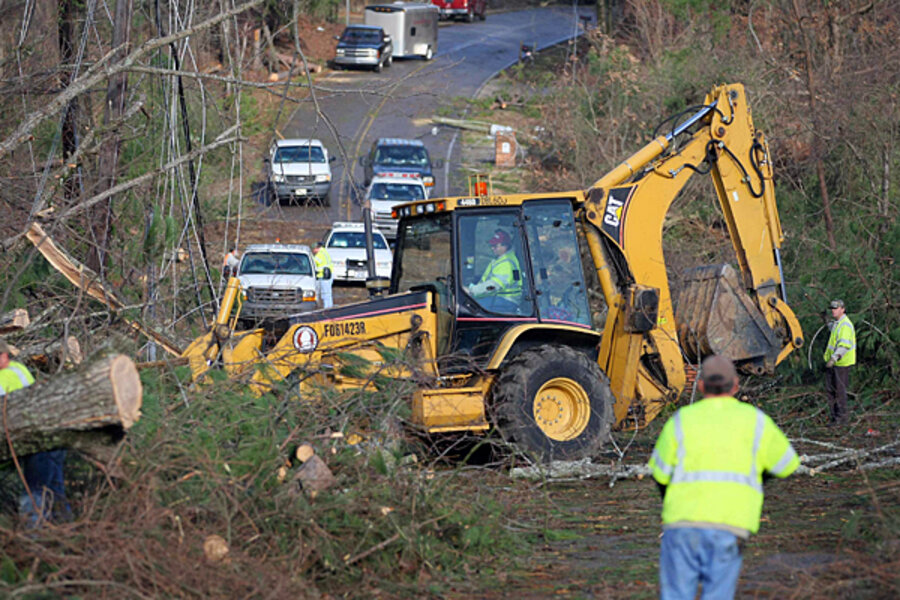Tornadoes hit Birmingham and broader South. Is that normal for January?
Loading...
At least 10 tornadoes struck the South overnight Sunday as a powerful storm system moved across the Great Lakes and into southern Canada.
The tornadoes were spawned along the southern end of a front that arced through the eastern US like a comma's tail, bringing severe thunderstorms, hail, and twisters to Arkansas, Mississippi, Alabama, and Tennessee before moving into Georgia later Monday morning.
The severe weather cut power to tens of thousands of residents and downed trees and damaged homes in communities in central Arkansas, as well as in communities around Tuscaloosa and Birmingham, Ala. Both Alabama cities endured major damage during last April's record tornado outbreak. So far, public safety officials attribute two deaths to the current storm system.
The overnight tornadoes underscore the point that while winter still holds the continent in its grip, storms can become intense enough to spawn individual tornadoes and even a large-scale tornado outbreak, says Greg Carbin, warning coordination meteorologist at the National Oceanic and Atmospheric Administration's Storm Prediction Center, in Norman, Okla.
The system that triggered the latest twisters formed over the Great Plains, then moved over the Great Lakes "and deepened pretty dramatically," Mr. Carbin says.
Even in Oklahoma on Sunday, "it was quite evident that we were dealing with a very strong system," he adds. By late afternoon, winds were peaking at 50 to 60 miles an hour and carried a great deal of dust, as well as smoke from wildfires.
"Whenever we see those conditions here, we know that whenever these winds meet up with moisture, we're going to have some problems," he says, referring to warm, moist air that typically hovers over the Gulf states. "That's what we saw last night beginning over Arkansas."
As the storm center pirouetted northeastward and intensified, its counterclockwise rotation swept relatively colder air to the storm's north around and down toward toward the warmer moist Gulf air. The clash between the two set up the conditions for the outbreak of severe thunderstorms.
So far this month, at least 21 tornadoes have touched down across the South, from Texas to North Carolina, as well as northward into southern Indiana, according to preliminary estimates from the NOAA's Storm Prediction Center.
The United States typically sees its first tornado of the year somewhere in the country about the second week of January, Carbin notes.
If current trends hold, this month could turn out to be an average one for tornado activity.
Counting only tornadoes that range from a relatively weak F1 on the damage-based Enhanced Fujita Scale to the strongest F5s, over the past 60 years January has seen anywhere from no tornadoes to a one-month total of 109 in 1999, Carbin says.
"Take the norm of that, and you'll be somewhere in the 30 to 50 range," he says.
The numbers omit the weakest category, F0, he acknowledges. The National Weather Service has improved its tornado reporting and verification methods over the past several years, so the number of F0s has been rising. Including F0s in the tally would make it harder to make long-term historical comparisons.





